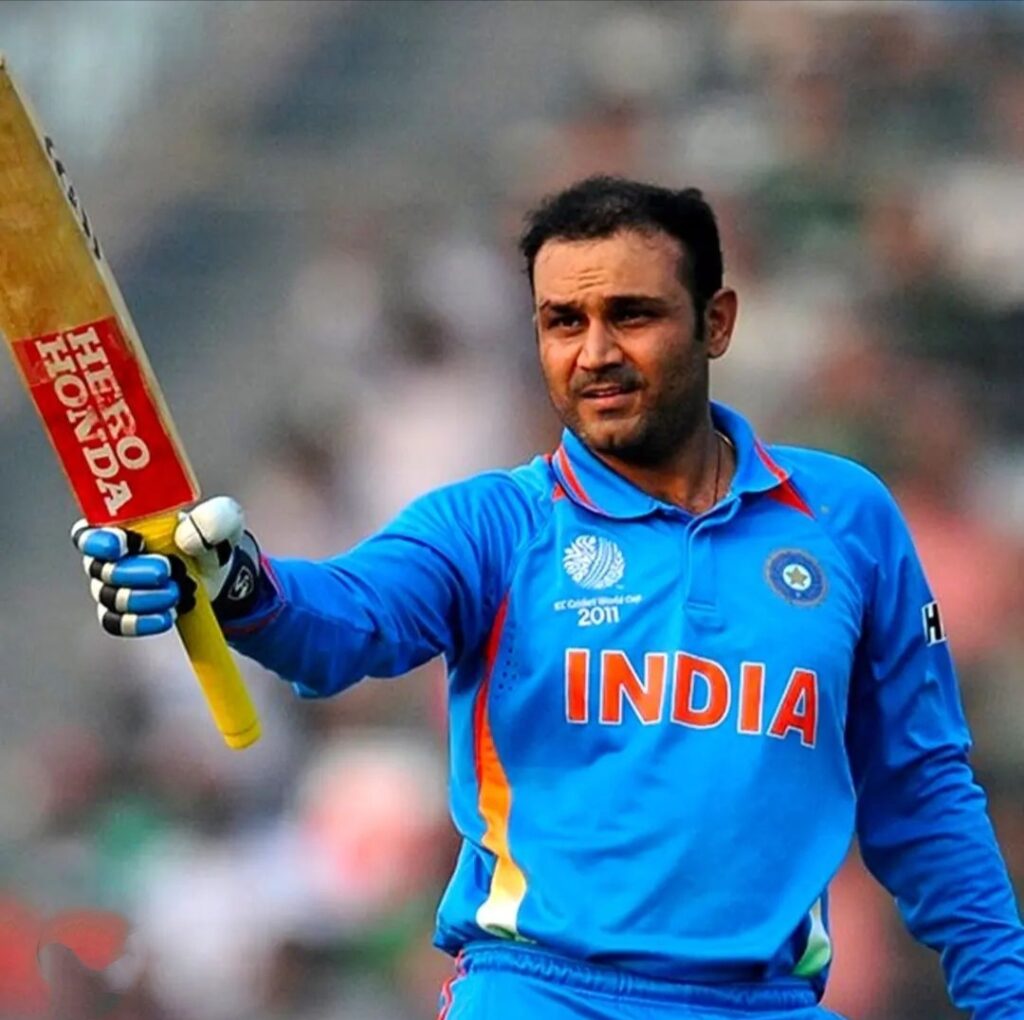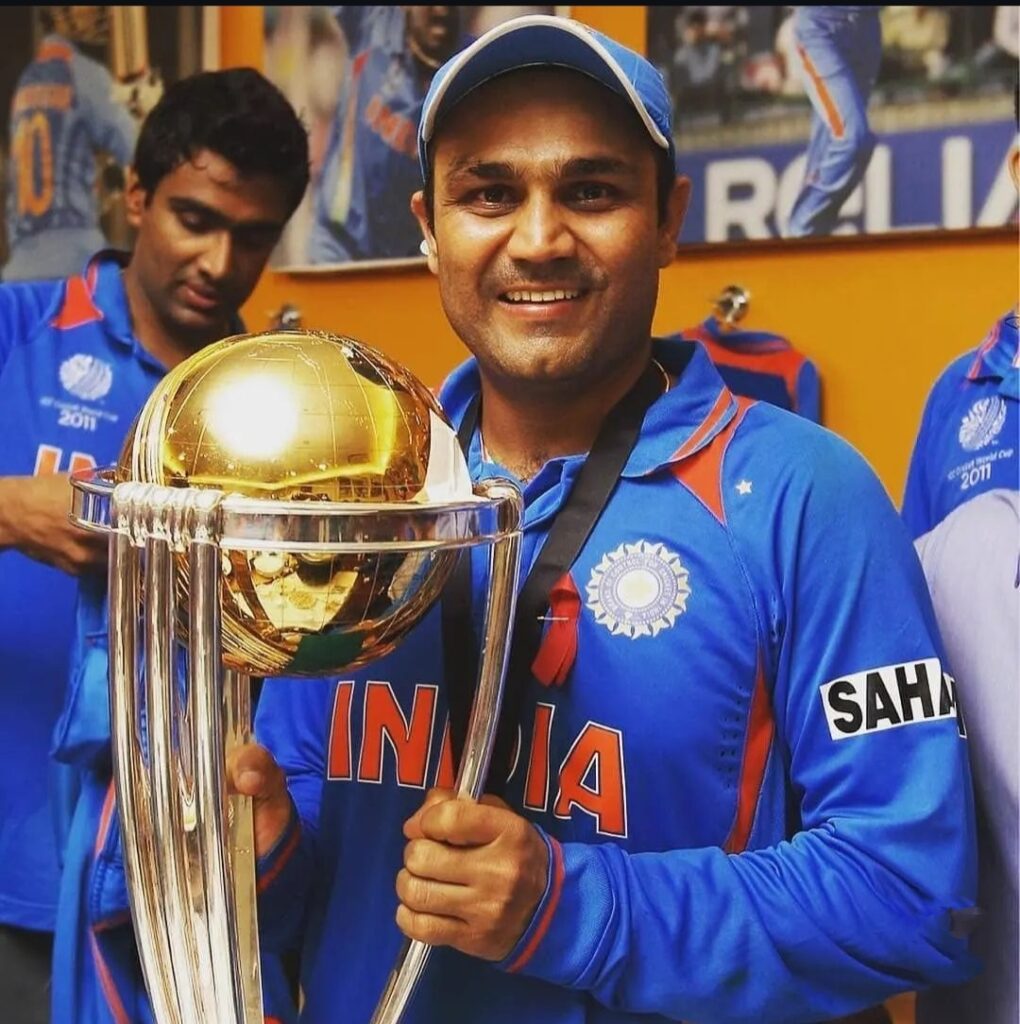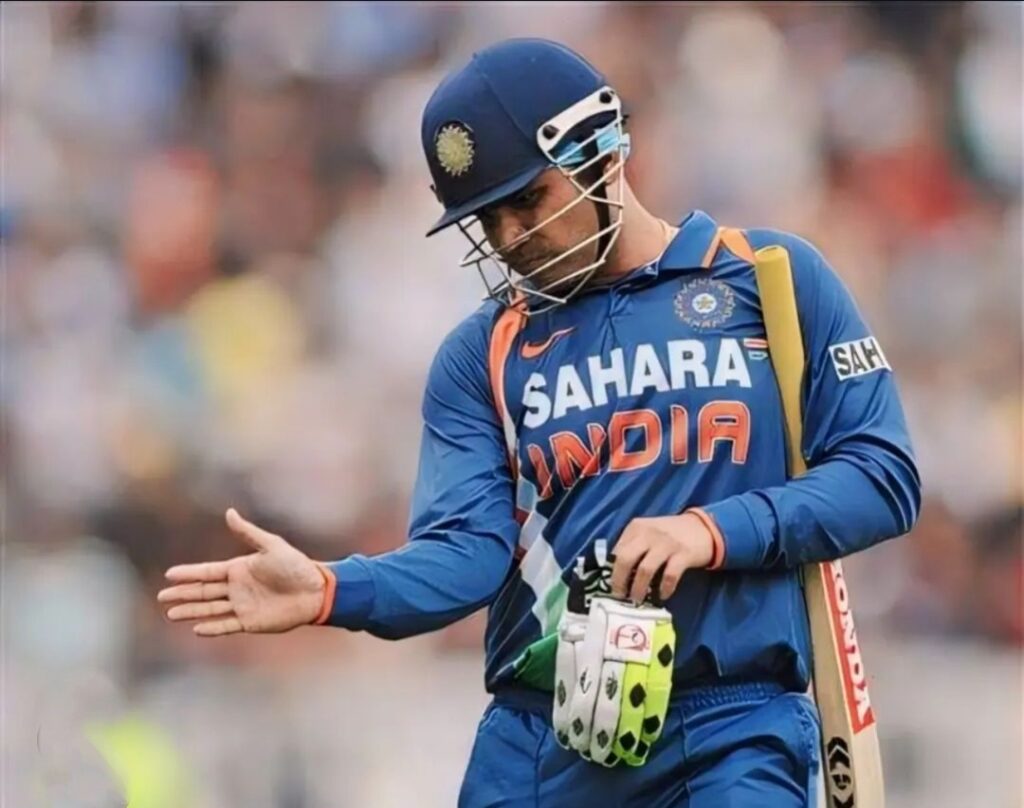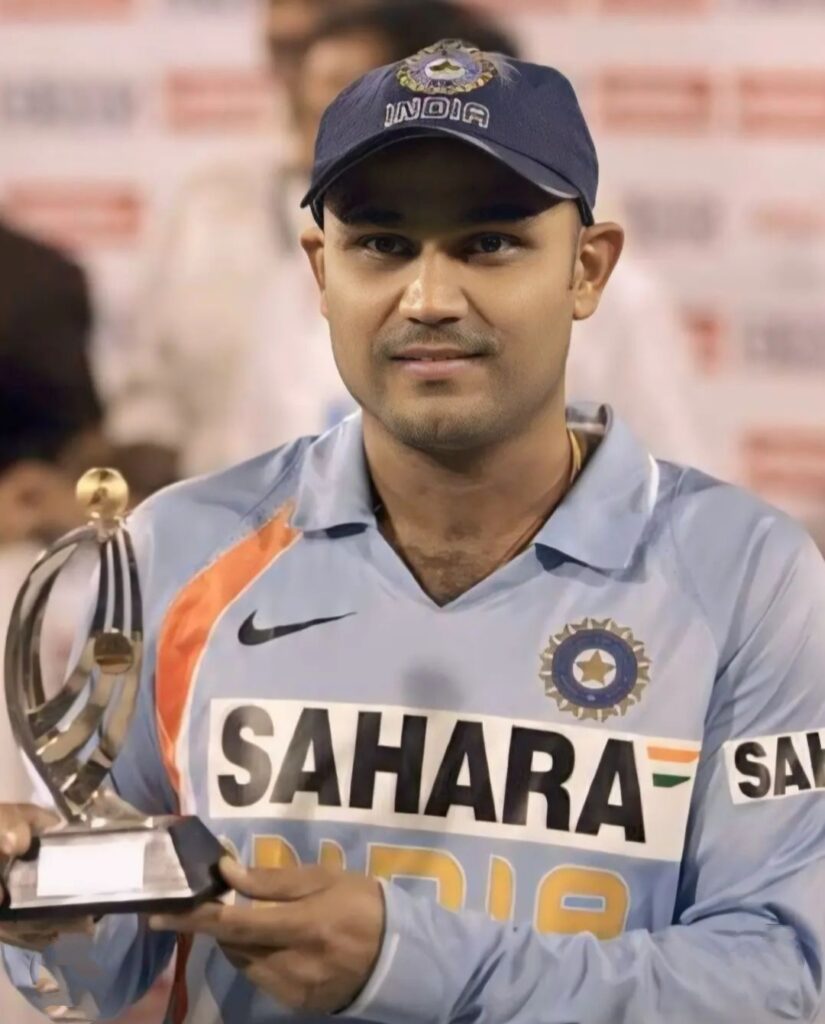
- Virender Sehwag: The Maverick of Indian Cricket
Virender Sehwag, often hailed as one of the most explosive batsmen in cricket history, redefined the art of batting with his fearless approach. Born on October 20, 1978, in Najafgarh, Delhi, Sehwag’s journey from a small town to becoming one of India’s greatest cricketers is a tale of talent, determination, and audacity. Over the years, he earned the nickname “Sultan of Multan” for his historic performances and became a symbol of India’s aggressive brand of cricket.
- Early Life and Domestic Career
Sehwag’s love for cricket began in his childhood. Growing up in a joint family in Najafgarh, his passion for the game was evident as he often imitated the batting styles of his idols. Encouraged by his father, Sehwag pursued cricket seriously and soon began making waves in the domestic circuit. His aggressive stroke play and penchant for big scores caught the attention of selectors, paving the way for his entry into the Indian cricket team.
In domestic cricket, Sehwag represented Delhi and later Haryana. His ability to dominate bowlers was apparent in the Ranji Trophy, where he consistently piled up runs. These performances eventually earned him a spot in the national team in 1999.
- International Debut and Rise to Stardom
Sehwag made his ODI debut against Pakistan in April 1999, but it wasn’t until 2001 that he announced himself on the international stage with a blistering century against New Zealand in Sri Lanka. This innings showcased his ability to dominate quality bowlers from the start, setting the tone for his career.
His Test debut came in 2001 against South Africa in Bloemfontein, where he scored a stunning 105. Batting at number six, Sehwag demonstrated his adaptability and flair, even against a formidable bowling attack. His fearless approach earned him a permanent place in the Indian squad.


- The Sultan of Multan
Sehwag’s crowning moment came in 2004 when he became the first Indian batsman to score a triple century in Test cricket. Playing against Pakistan in Multan, he smashed 309 runs off just 375 balls, earning him the title “Sultan of Multan.” His ability to dismantle bowlers with a mix of aggression and precision was unparalleled.
This innings not only solidified his place in the team but also marked a shift in India’s approach to Test cricket. Sehwag proved that attacking cricket could be as effective as a defensive approach in the longest format of the game.
- Explosive Batting Style
Sehwag’s batting was characterized by minimal footwork, impeccable hand-eye coordination, and an unrelenting attacking mindset. He was known for his ability to hit boundaries at will, regardless of the format or the match situation. Unlike traditional openers, he believed in dominating bowlers right from the start.
One of Sehwag’s trademarks was his penchant for starting his innings with boundaries. Whether facing a fast bowler or a spinner, he often dispatched the first ball to the fence, setting the tone for his innings. His ability to convert starts into big scores was another hallmark of his career.
- Memorable Records and Achievements
Sehwag’s career is studded with numerous records and milestones. He is one of only a handful of players to have scored two triple centuries in Test cricket. His second triple ton came against South Africa in 2008, where he scored 319 runs off just 304 balls. This innings remains one of the fastest triple centuries in cricket history.
In ODIs, Sehwag became the second player after Sachin Tendulkar to score a double century. He smashed 219 runs against the West Indies in 2011, showcasing his ability to adapt his aggressive style to the 50-over format.
Sehwag’s contributions were instrumental in India’s rise in world cricket. He played a crucial role in India’s victories in the 2007 ICC T20 World Cup and the 2011 ICC Cricket World Cup.



- Leadership and Legacy
While Sehwag’s captaincy opportunities were limited, he led India in a few matches and captained Delhi Daredevils in the Indian Premier League (IPL). His leadership style mirrored his batting philosophy—aggressive and fearless.
Beyond his records, Sehwag’s legacy lies in his impact on Indian cricket. He inspired a generation of cricketers to play fearless cricket, unshackling the traditional approach to batting. Young players like Rohit Sharma and Rishabh Pant have often credited Sehwag as an influence on their careers.
- Retirement and Life Beyond Cricket
Sehwag left a rich lagacy when he retired from international cricket in 2015. Post-retirement, he transitioned into commentary, where his witty and insightful observations endeared him to fans. He is also actively involved in cricket academies, nurturing young talent across India.
In addition to his cricketing pursuits, Sehwag is known for his philanthropic work. He established the Virender Sehwag Foundation, which focuses on providing education and opportunities to underprivileged children.
- Conclusion
Virender Sehwag’s contribution to Indian cricket transcends numbers and records. He redefined the role of an opener, proving that aggression and dominance could thrive in all formats of the game. His fearless batting, combined with his ability to deliver in crucial moments, made him a fan favorite and a cricketing icon.
Sehwag’s journey from a small town in Delhi to the pinnacle of international cricket is a testament to his talent and determination. Even years after his retirement, his legacy continues to inspire cricketers and fans worldwide. As the “Sultan of Multan,” Virender Sehwag will always hold a special place in the hearts of cricket enthusiasts, remembered as a player who brought joy, excitement, and audacity to the game.